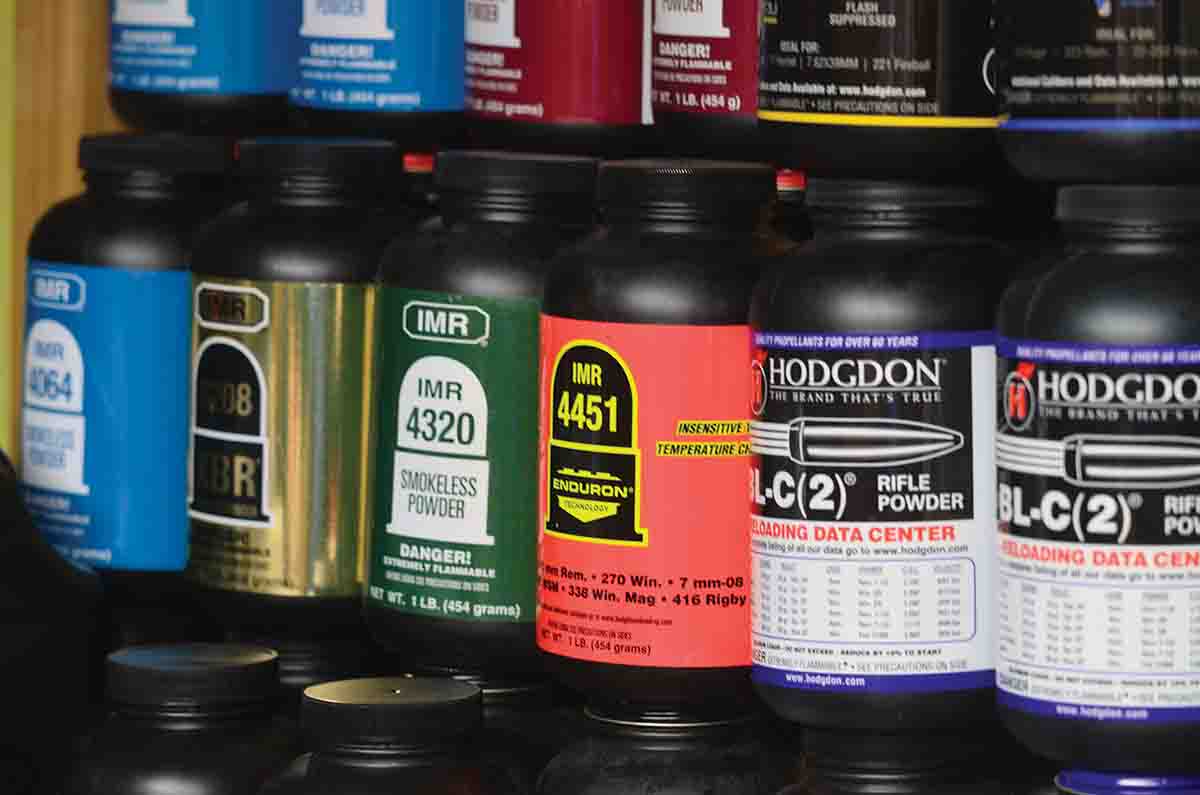In Range
Lockdown Update
column By: Terry Wieland | October, 20

In the last issue, I noted that Graf & Sons, the handloading supply outfit, was backed up, with orders not being filled for eight to 10 days – a far cry from its usual overnight response. In the intervening eight weeks, things have not improved. When I spoke with someone there in mid-May, non-hazmat orders were not leaving the warehouse for at least 14 days, and hazardous materials like primers and gunpowder were taking considerably longer. For such items, which require special handling from the shipping department to your door, they were not even committing to a time.
It’s impossible not to feel sympathetic toward companies like Graf & Sons or MidwayUSA, confronted with almost unprecedented demand at a time when not only is supply restricted, but their capability to physically ship orders is hampered by unfamiliar safety rules imposed by the government – federal, state and local.
It’s not difficult to figure out why, in the early days of pandemic panic, that supplies of 9mm, .223 and .308 flew off the Walmart shelves, creating one of the artificial shortages so familiar to those in the shooting game. Such shortages can occur for any number of reasons, from the dire predictions surrounding Y2K to an anti-gun politician unexpectedly soaring in the polls.
Hard as it is to believe (to me, anyway) the Y2K phenomenon occurred more than 20 years ago and is not even a faint memory to many people alive today. For those who do remember, it’s mildly embarrassing, like recalling the outlandish bell-bottoms we wore in the 1970s. Just because dire predictions don’t come to pass, however, does not mean the fears were unwarranted or silly in the first place.
I hate to stray into such a minefield as Donald Rumsfeld’s “unknowns” – both “known” and “unknown” – but while the press was only too eager to lampoon the defense secretary for his statements, he was absolutely right. What happened with Y2K is a case in point. It was a “known” unknown. We knew it was coming, but we didn’t know how it would play out. Many people, realizing this, stocked up on canned goods, bottled water and firepower. Others laid out cash for a generator, just in case.
At the time, a major worry was how the time and date “00:00:01 01-01-00” would affect the clocks and computers that ran the nation’s electrical utilities. Would all the nuclear stations automatically close down? As it turned out, the witching hour passed without so much as a flicker of a lightbulb. Many of those who had been on the verge of panic an hour earlier then rounded on the engineers who ran the system and derided them for their unfounded fears.
Those of us who had bought a generator – and yes, I was one – were a little sheepish and stowed them in the back of the garage. We were afraid our wiser neighbors who, according to them, had known all along nothing would happen, would spot the new generator and make fun of us.
Two-and-a half-years later, on a bright, sunny day in the summer of 2003, we got our own back. I was shooting skeet one afternoon when suddenly the thrower stopped working. We checked the fuses. Nothing. We tried the lights in the clubhouse. Same thing. We locked up, went home and found there was no electricity there either. In fact, there was no electrical power anywhere across a broad swath of Ontario, Quebec, the Midwest and the northeastern U.S.
What had occurred was an “unknown unknown” wherein a completely trivial event at a small power station in Ohio had triggered a response, which set in motion a bizarre domino effect across the Northeast, putting Ontario’s Hydro One’s entire system – the largest in the world – out of commission. The blackout lasted for three long days. The very event the engineers said “could not happen” had indeed happened.
Country people with electric pumps had no water. Cars low on gas could not get more. Unless you had a battery-powered radio (remember those?) you could not even find out what was going on. Cooking? Break out the Coleman stove. (“No naphtha? You idiot! I told you last fall to get naphtha…!) Being summer, it was hot and humid, and no one had air conditioning. In the current idiom, they were “sweltering in place” with nowhere to go, and no way of getting there anyway. Old people died, to be found in their homes a month later.
The Great Blackout of 2003 was the vindication of the backup system principle and those of us – survivalist in all but name – who owned generators enjoyed a brief period of popularity such as we had longed for in high school but – being survivalist in all but name – had never enjoyed.
One obvious explanation for the current surge in demand for reloading supplies of all kinds is that, unable to buy factory ammunition, guys are rolling their own, preparing for Armageddon. All very admirable, I’m sure, and vastly superior to bingeing on Hollywood zombie flicks.
Another explanation, and one I increasingly favor, is sheer boredom. Loading ammunition is one creative and productive activity that can be done in the home, and just about every serious shooter I know has a basement full of brass, lead ingots, boxes of bullets and a variety of primers that would do credit to the Smithsonian. With time on your hands and all that wherewithal, what better way to wile away the days than assembling fodder for the “nine-mil,” the AR and your trusty skeet gun?
And, if you run short of this component or that powder, you click on to Graf & Sons, order a supply and eventually the UPS truck shows up at your door. No donning the face mask and venturing forth into the perilous streets like Charlton Heston’s Omega Man – a 1971 glimpse into the future that may seem, these days, all too real: A worldwide plague, a lone survivor, a desperate search for a cure. (Oh, wait a minute. That’s not a movie. That’s the news on NPR. . .)
Speaking of UPS, in my area we have a feature wherein you can call up a map and see where your delivery truck is at that very moment, when you are waiting to sign for anything “hazardous” like ammunition. Like a cat with an immutable routine, it goes something like this: pull the handle on the reloading press 25 times, pack the shotshells in a box, walk over to the computer and check for emails, call up the UPS map and see how close the truck is, walk back to the reloading press and pull the lever another 25 times.
Another wrinkle in this area: They have given up actually getting the signature that they demand you must be there to provide, otherwise they won’t leave your powder and primers. Instead, the driver looks you up and down from a safe distance, asks for your name, then scrawls an undecipherable initial on the screen and says, “Good day.”
The one-in-two-million chance of you not being the right guy, and using the package for nefarious purposes, is trumped by the one-in-one-million chance of contracting a virus which, statistically, has only a one-in-a-thousand chance of causing you any discomfort, and a one-in-ten-thousand chance of killing you.
I’m sure there is logic there somewhere. I just don’t see what it is. Kind of like Y2K. In retrospect, anyway.


